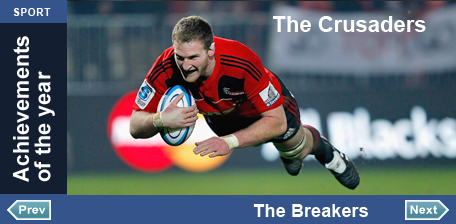Among the carnage, AMI Stadium stood cracked and useless, part of its surface liquefied. In the general scheme of things it was a small break in a fractured city, but it would have huge ramifications for coach Todd Blackadder's carefully constructed campaign.
The Crusaders would not play a single game at their fortress. The team's season had effectively unravelled before March started.
How they first of all dealt with the devastation (what management types like to call "coping strategies") and then defeated the odds (what jocks like to call "mental toughness") made for one of rugby's greatest stories.
For a start, they made it clear that while others might feel sorry for them, they couldn't feel sorry for themselves.
Blackadder would show how much he respected his players by raising, not lowering, his expectations of them.
It was what was called the "new normal": travelling to play every game, more than 100,000km in three months; kissing your family goodbye on a weekly basis, hoping that another big quake wouldn't strike while you were gone; playing a game in London to try to recoup some of the financial losses.
About the only thing that was the "old normal" was this: the Crusaders kept winning.
Until the final, that is.
At Suncorp Stadium, on a golden night for Queensland rugby, the Reds beat a team that finally ran out of energy and answers.
Having had to travel from New Zealand to South Africa to Australia in a fortnight might have contributed but, hey, that was the new normal.
The defeat might have hurt, but the Crusaders and the people of Christchurch quickly rebounded - they were acutely aware of what real loss was all about.


